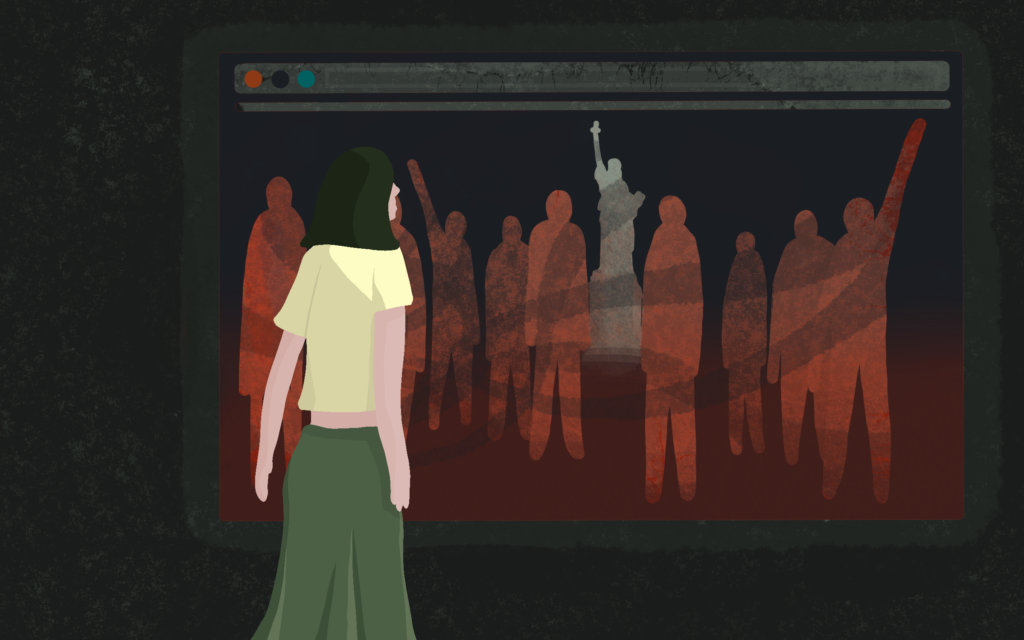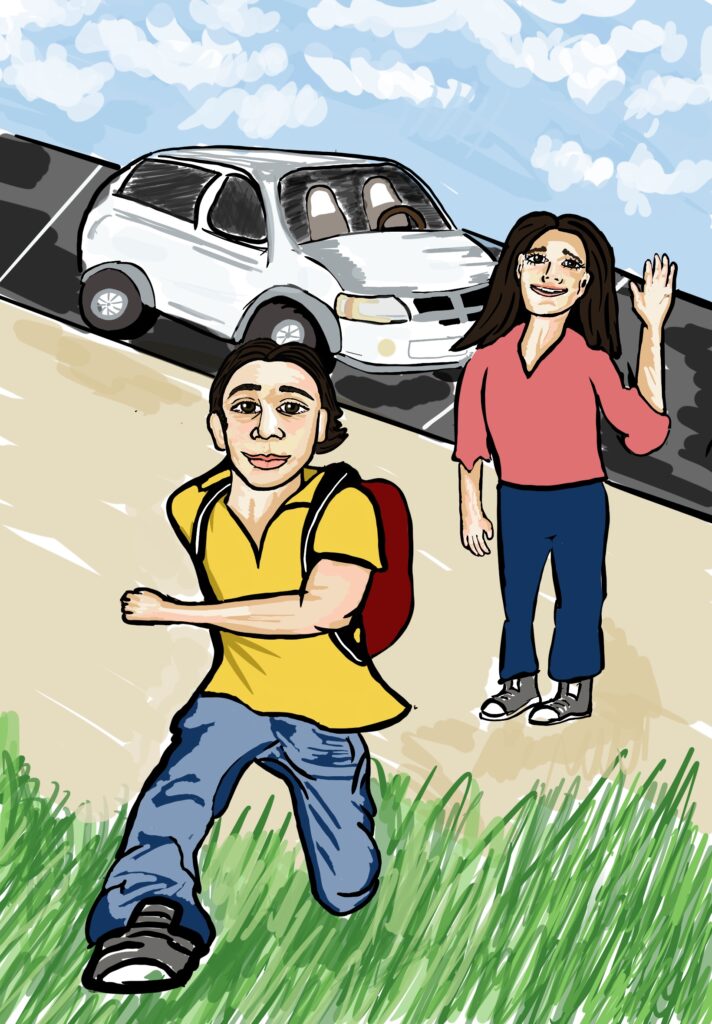
Graphic by Yujin Kim/The Choate News
On January 6, 2021, a violent mob stormed the U.S. Capitol in one of the most visceral and tragic examples of the recent rise in domestic extremism. In the last year, there has been an increasing number of white supremacist groups and increased violence targeting marginalized groups. According to the Domestic Terrorism Prevention Act of 2019, “White supremacists and other far-right extremists are the most significant domestic terrorism threat facing the United States.” Donald Trump P’00’s presidency exacerbated the issue, as his hateful rhetoric and prevalent support of white supremacy furthered radicalized domestic terrorism.
Recall the first presidential debate, when Trump refused to condem the Proud Boys — a white supremacist and neo-fascist group — and instead told them to “stand back and stand by.” Trump then encouraged the Capitol storming, which involved the Proud Boys. As white supremacy is on the rise, so are racially and ethnically motivated violent extremists (RMVEs). Domestic terrorism — specifically racially motivated domestic terrorism — is the greatest threat to the American civilian population, the he most recent example being the mass shooting in Atlanta, Georgia.
The increase in RMVEs is directly correlated with the “White genocide” conspiracy theory, a perceived movement toward racial integration, and the extinction of whites through forced assimilation. Trump stood as a shining beacon of hope for these white supremacist hate groups as he lended credence to their conspiracies. His xenophobic, racist speech invited the country to become more hateful and more divided. Further displaying a concerning trend in the United States, more than two million firearms were bought in January of 2021, the third-highest one-month total on record, according to The Washington Post. So it is no surprise that firearms are used to target minority groups in RMVEs.
The country has seen a trend of violence targeting Asian Americans over the past year. According to a report from Stop AAPI Hate, nearly 3,800 hate incidents targeting Asian Americans have been reported nationwide since last March. This issue was directly influenced by Trump, as he blamed the coronavirus pandemic on Asians and called the virus the “Chinese virus” and the “Kung Flu.” Another example of anti-Asian racism came when NBA player Jeremy Lin was called “coronavirus” by another player during an NBA G League game. Whether it be violent shootings, hate crimes, or racist language, Asian Americans have been targeted by an increase in white supremacy.
America has a legacy of discrimination and violence against Asians that is often brushed under the rug. How many Americans know of the Chinese Massacre of 1871, when Asian immigrants were attacked by a mob and lynched in Los Angeles? Or of the Japanese Internment during World War II, when more than a hundred thousand Americans were forced from their homes and businesses and kept in concentration camps? Anti-Asian prejudice has long streaked American society, and it’s hardly surprising that such intolerance is resurfacing today.
While President Joe Biden did release a statement and establish some minor plans to combat racial violence targeting the AAPI community, the Biden administration can do more. Specifically, Biden can make it easier to prove hate crimes against Asian Americans. According to The New York Times, “establishing such a motive for attacks against Asians is even more challenging because there is no widely recognized symbol of anti-Asian hate, such as a noose or a swastika.”
In order to combat this legacy of racism and counter domestic terrorism, the country needs more than statements. To effectively truly fight racism, policy change is needed.




